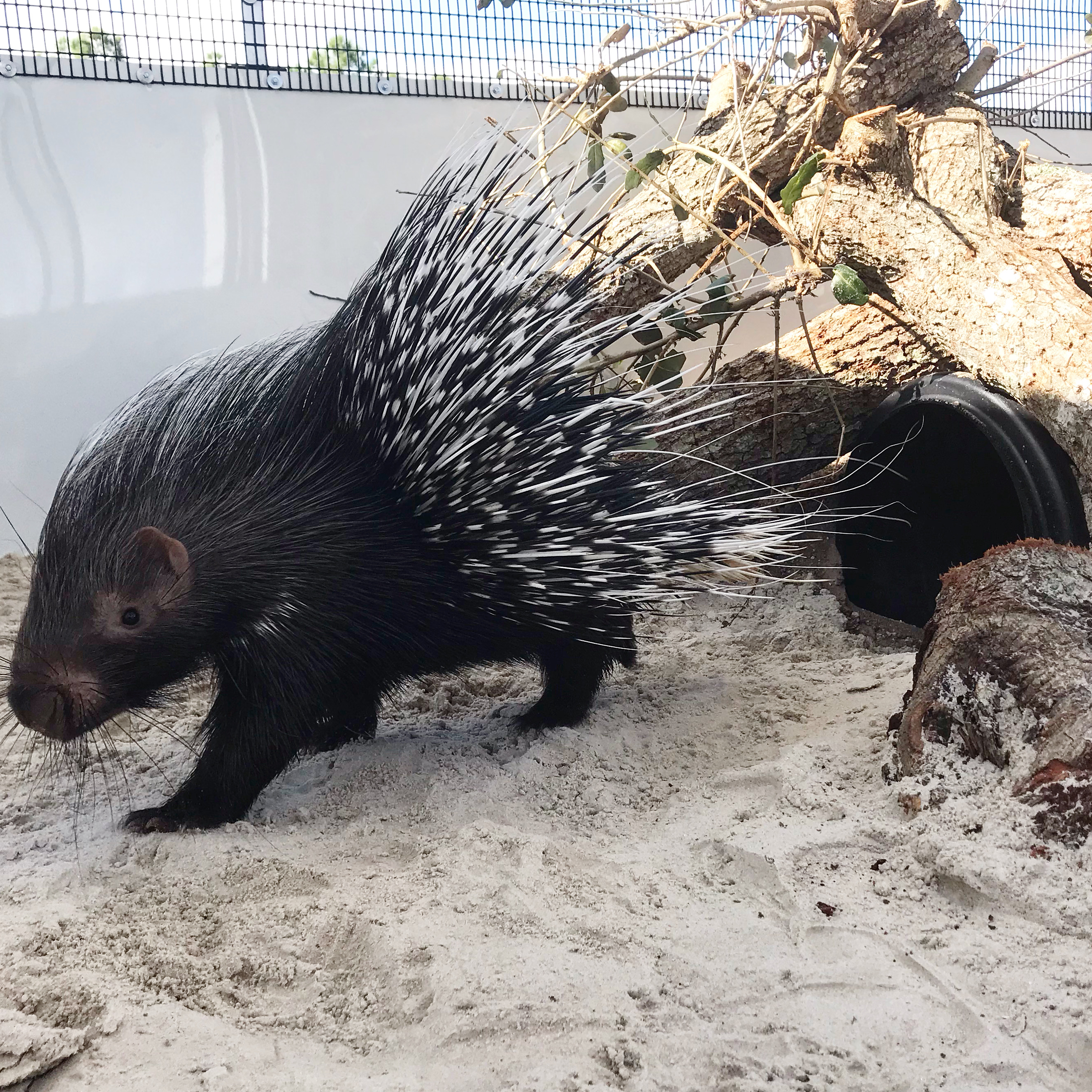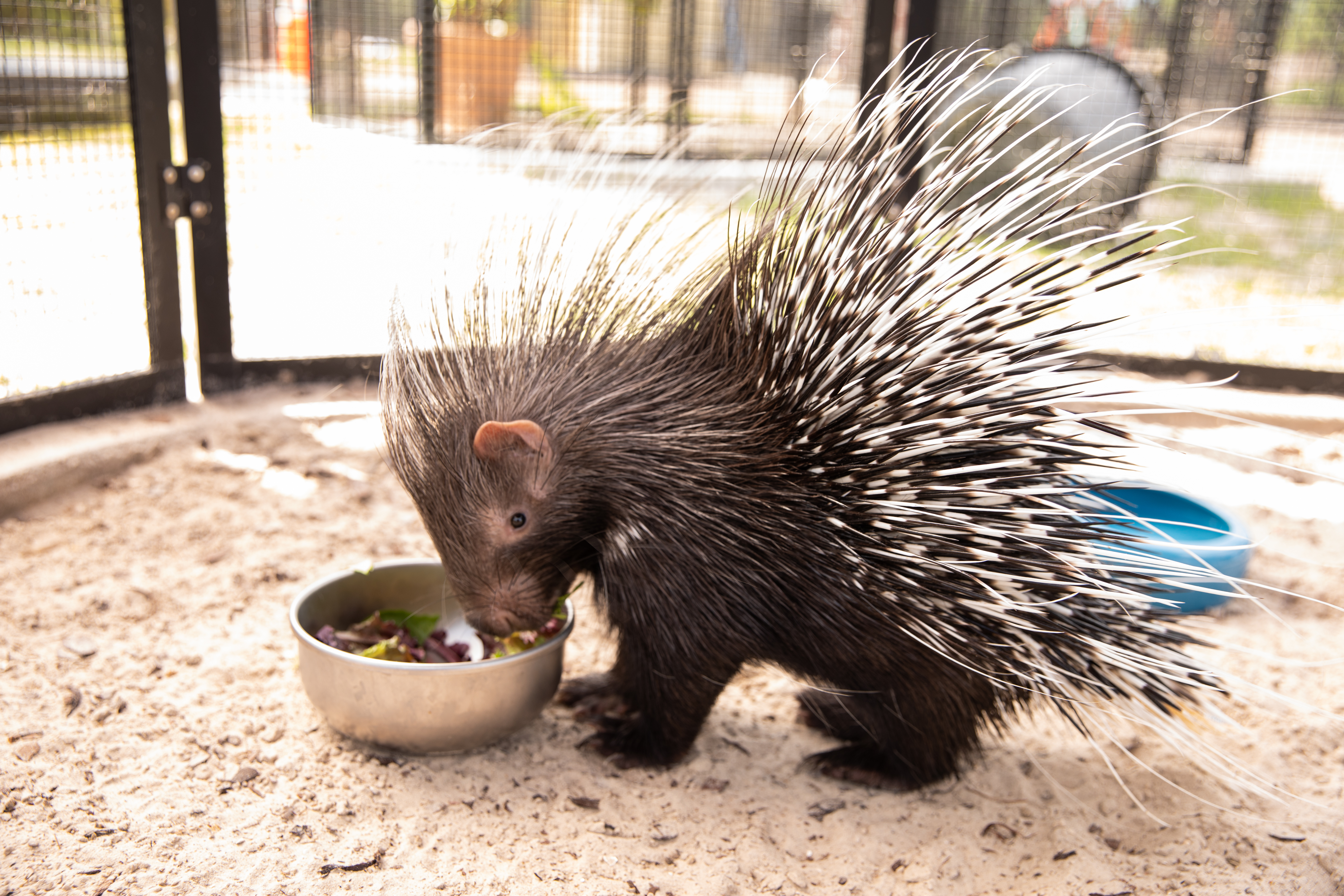Quilla & Prickles
Quilla was born on September 8, 2019. We have had her since she was only ten days old and came to us weighing just one pound. Her favorite food is sweet potato and corn. She is very social and will follow her keepers around. She loves her blankets and enjoys laying underneath them for naps. Although porcupines are primarily nocturnal, Quilla can be active during the daytime hours.
Prickles was born on October 31, 2019. He is quite a loveable little fellow and prefers to be with his keepers. We are beginning to harness train him so that he can go on more enrichment walks and make off-site visits in the future.


The word porcupine means ‘quill pig’ in Latin. However; porcupines are not related to pigs, they are actually rodents. African Crested Porcupines are the largest species of porcupines in the world and heaviest of all African rodents.
Porcupine quills are a favorite ornament and good-luck charm in Africa. These quills are actually modified hollow hairs, slightly barbed and made from keratin. The hollow rattle quills serve as musical instruments and were once used as containers for gold dust. In addition to being targeted for their quills, porcupines are also illegally hunted for their meat.
African Crested Porcupines can live for 12-15 years on average in the wild. In captivity their lifespan averages 20 years.
Adult porcupines can weigh up to 66 pounds and are 23-37 inches long.
African-crested porcupines are the largest species of porcupines in the world. They are stocky with thick short legs. For protection, their body is coated in long sharp quills. These hollow quills are actually modified hairs made of keratin. Just like hairs, these quills fall out, or shed, periodically. The remainder of their body, including belly, is made up of thick course hair.
In captivity African Crested Porcupines are fed: rodent block, wild herbivore pellets, mazuri leafeater biscuit, sweet potato, kale, romaine, corn, and carrots.
Porcupines are nocturnal social animals, living in small family groups of an adult pair and their offspring. Adult porcupines are monogamous, meaning they mate for life. Family groups live in a complex tunnel system, spending the day time in the burrow, and going out to forage for food at night time. Although they are social they will forage for food alone.
We have plans to pair Quilla with an unrelated male in the near future.
Porcupines communicate through a series of noises and body language. These verbal animals will growl, snort, grunt, cough, make a clicking sound with their teeth, and use the special quills on the end of their tail to make a rattling noise.
When angry or afraid they will also stomp their feet or jump up and down to show their displeasure. When seriously threatened porcupines will run at speed backwards towards the threat, in order to embed their quills into what is threatening them. They have been known to seriously injure or even kill lions, leopards and even humans through infection.
Crested porcupines will also use scent marking, from glands near the anus, to mark out territories and feeding sites.
African Crested Porcupines can run faster than a human and are adept swimmers.
Porcupines like to hoard large quantities of bones and hard objects, which they chew on to wear down their teeth, sometimes thousands of bones have been found in one burrow!
Porcupines have special quills at the end of their tail which they rattle like a rattlesnake.